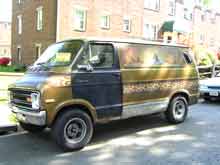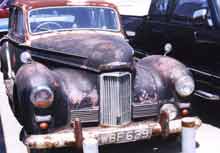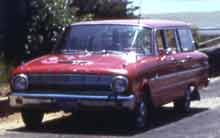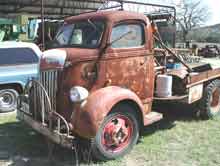Van Extraordinaire
Remember the van daze of the 1970s? Every young dude had to have a van, a van that made a statement. Add shag carpet, a water bed and you were ready for sex, drugs and rock and roll.
It started with the flower children of the sixties and their psychedelic VW microbuses. In 1961, however, Ford introduced the Econoline and set the pattern for the following decades. In '62 a mode elevée version, the Falcon Club Wagon, entered the catalog; the Econoline was for families as well as tradesmen. Dodge followed in 1963 with the A-100, and Chevrolet joined the pack in '64, forsaking the microbus-like Corvan for the new Chevy Van.
With kids tricking out the stark commercial vans for their own social tastes, it was only a short time before big business entered the market. The recreational vehicle industry, which had arisen with pickup campers and motor homes, started doing van conversions, some basic, some quite elaborate. My daughter Harriet spotted the van atop this page in Arlington, Virginia, recently, dubbed Vantastic by Hop Cap. Hop Cap, Inc., of Bremen, Indiana, one of a host of RV manufacturers in Michiana, the region along the Indiana/Michigan border, began making fiberglass pickup caps, and expanded into van conversions and motor homes. This Vantastic is a rather mild makeover of a circa 1975 Dodge van, with diamond bubble windows and trendy graphics.
The van movement finally faded, and with it Hop Cap, which closed in 1980. By the mid-eighties, the van of choice was a Dodge Caravan, the darling of soccer moms and football dads. You can still buy a conversion van, but they're for adults now. The kids drive tricked-out Honda Civics.
That's not to say that the psychedelic van movement is dead. This Ford is regularly seen in New London, Connecticut. One wonders, though, how in the world the driver sees where he's going.




